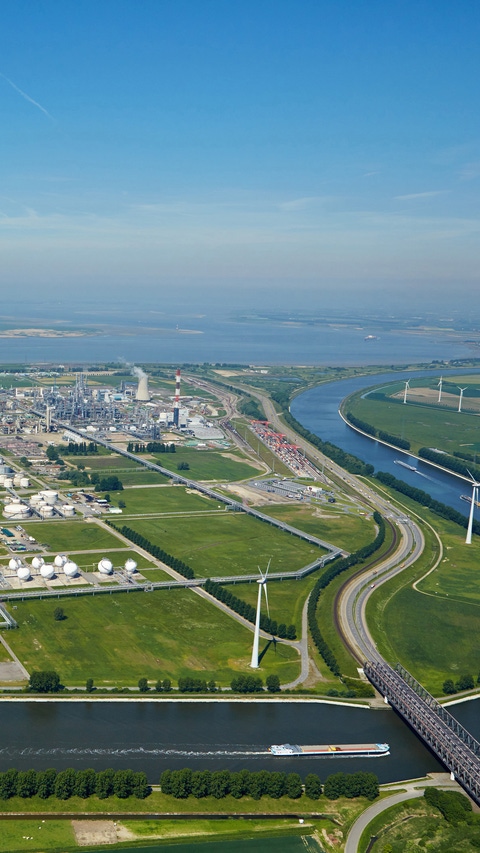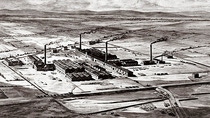Who we are
History of BASF in Belgium
A look at the past: milestones in the history of BASF in Belgium.
From 2011 to the present
2018
BASF acquires a number of activities and assets of Bayer, which it had to divest in the framework of the acquisition of Monsanto. With this, BASF welcomes some 400 new employees in Belgium.
2017
BASF subsidiary CropDesign is reorganized into a center of excellence for plant phenotyping and moves to new headquarters.
2016
BASF acquires Chemetall, a leading global supplier of applied surface treatments for metal, plastic and glass substrates. The acquisition also includes the Benelux subsidiary Chemetall B.V.
2015
BASF prepares to invest heavily in groundbreaking technology for superabsorbent polymers. The plant in Antwerp is the first one to be expanded and modified for the manufacture of this innovative product, SAVIVATM.
2014
BASF celebrates its 50th anniversary in Antwerp with its (former) employees, neighbors and other stakeholders. BASF enters into an agreement with the City of Antwerp, "Elements for Talents". In this agreement the company commits to providing substantive and financial support for various training and education projects for youth during the next few years.
2011
BASF sells its fertilizer activities, including a large production installation in Antwerp, to the Russian fertilizer manufacturer EuroChem.
The European Commission gives BASF and INEOS the green light for the formation of the joint venture Styrolution. The Antwerp facilities that manufacture and ship styrenics are included in this joint venture.
BASF Coatings Services centralizes its operations into a new headquarters in Bornem. Customers in the south of the country are still partly serviced from the company’s site in Battice. In September, BASF Coatings Services opens its Refinish Competence Center in Bornem. It is one of the safest training facilities in Europe.
BASF Belgium SA/NV and BASF Coordination Center Comm. V merge into the new entity BASF Belgium Coordination Center Comm. V.
From 1990 to 2010
2010
The BASF entities located in Watermael-Boitsfort (including, among others, BASF Belgium and BASF Polyurethanes) move to a new office building in Waterloo.
2009
In March BASF Antwerpen starts operating a new terminal for inland shipping. That same month, the company begins construction on a multimodal road/railway terminal in collaboration with the Swiss train operator Hupac and Inter Ferry Boats (IFB), a subsidiary of the NMBS.
2006
BASF Plant Science acquires CropDesign, a plant biotech company, headquartered in the Ghent region, that develops innovative solutions for improving crop productivity.
BASF acquires the global construction chemicals activities of Degussa AG. The acquisition includes the production site in Ham, which becomes part of BASF's Construction Chemicals division.
1998
BASF Computer Services SA/NV is founded. Today, this entity operates under the name BASF Business Services SA/NV and has offices in Antwerp and Waterloo.
1997
Creation of Bascom Belgium (today operating under the name BTC Chemical Distribution Unit) for the sales and distribution of specialized chemical products to local customers in Belgium, Netherlands and the Grand Duchy of Luxembourg.
1993
BASF Polyurethane, the global headquarters of the polyurethane division of BASF, settles in Brussels. Today, this entity operates from Waterloo. The division has since been renamed Performance Materials.
1990
BASF opens the EC Liaison Office (present name: EU Government Relations BASF Group) in Brussels. This entity organizes the political dialog between the BASF Group and political stakeholders in the EU.
A very significant investment in a world-class steam cracker is announced at BASF Antwerpen. This facility becomes the new operational heart of the site. Various other downstream facilities in the chain of production are added throughout the 90s: the polyisobutene, acrylic acid, superabsorber and propylene oxide facilities.
From 1964 to 1989
1988
On the initiative of BASF Antwerp and together with BASF Belgium, the BASF Group establishes the BASF Coordination Center. This coordination center quickly becomes a major financial hub of and for the entire BASF Group.
1985
On July 1, BASF Chimie is renamed BASF Belgium SA/NV. Inmont SA/NV (now BASF Coatings Services SA/NV) is acquired.
1979
The second oil shock leads to shrinking investment budgets at BASF Antwerpen. Several facilities are shut down temporarily or even permanently during the next few years. The lack of new investments motivates the company to make existing processes more energy-efficient.
1967
The first plants at BASF Antwerpen start operating. They produce nitric acid, phosphoric acid and sulfuric acid, intermediates that are required for the production of Nitrophoska, a synthetic fertilizer.
1965
TECOCHIM is renamed BASF Chimie SA.
1964
In 1964 BASF decides to build a new plant in Antwerp and allocates 200 million Deutsche Mark to this project. On 10 December 1964, BASF Antwerpen SA/NV is officially founded as a full BASF subsidiary.
From 1937 to 1963
1957
TECOCHIM SA is founded in Brussels (37% is owned by BASF). The company takes over the activities of Contichim and Tecolor. All sales activities of BASF in Belgium are centralized.
1952
The newly established Contichim SA takes over the sales activities of Contimine.
1950
Contimine (Compagnie Belgo-Continentale des Minerais et Métaux et Produits Chimiques SA) takes over the role of distributor of BASF chemicals. Wengler is appointed as distributor of plastics and Merxmachines SA as distributor of formaldehyde adhesive.
1945-1953
I.G. Farbenindustrie is shut down. Various companies are established to take on these activities.
1945-1949
Many BASF products (mainly paints) are sold through Francolor Belge (SA de Matières Colorantes et Produits Chimiques); that agreement is terminated in 1950. Luxembourg and the Belgian Congo are included in the Belgian sales region.
From 1888 to 1936
1936
An agreement of the agency concerning various products of the chemical sales community in Belgium and Luxembourg is concluded with Bogaerts (Comptoir Chimique et Industriel). The agreement is extended in 1938.
1925
Representatives of I.G. Farbenindustrie AG become the distributors of BASF products, including: "G.M.C." (La Générale des Matières Colorantes, Produits Chimiques et Pharmaceutiques, Société Coopérative), Brussels. An agreement of the agency concerning the sales of paints and coatings is concluded with G.M.C. in 1925. An agreement regarding the sales of chemicals follows in 1930. In 1931 G.M.C. takes over the sales of the Department L products.
The six largest German chemical companies - BASF included - merge into I.G. Farbenindustrie AG.
1921
Joncker & Bornand take over the inactive Jungbluth & Joncker.
1912
Jungbluth & Joncker take over the inactive Leiberich & Jungbluth, this only for Belgium.
1908
Leiberich & Jungbluth take over the activities of the by now inactive Bohn & Leiberich.
1905
A sub agency of the Brussels distributor is founded in Tilburg (the Netherlands). The manager of this agency is Caspar van Spaendonck. The distribution in Belgium and the Netherlands is done by the headquarters in Brussels.
1890
First sales record for Belgium: Belgian turnover represents 1.1% of the total turnover of the Badische Anilin- & Soda-Fabrik (BASF).
Ca. 1888
Bohn & Leiberich in Brussels distributes BASF products in Belgium and the Netherlands.

